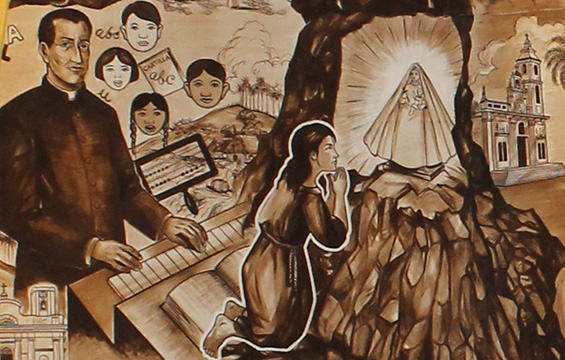In writing the history of the Shrine, we cannot overlook this magnificent work that is the mural. Many worked anonymously on the elaboration of it, but the best testimony can be given only by the artist himself to whom the work was commissioned.
For a better understanding of the mural, for our part, we will only add the biographies of the patriots and characters portrayed in the mural.
The Ermita's Mural

I started the 747 square feet mural, where 63 figures appear, on July 16th, the feast of the Mother of Heaven, under the title of Our Lady of Mount Carmel. I started with the Baby Jesus and the Virgin holding him. Immediately after I painted the last depiction that represents the exile phase with a boat escaping from slavery in search of freedom.
I did some work on the saint of Cuba, our Archbishop Saint Antonio Maria Claret who fought so hard preaching the Gospel everywhere and especially in my province of Oriente. I had to go to the Pan American Hospital to have a cataract operation on the other eye since the first one had been successful. I went to the hospital blind in one eye, very confident that my Heavenly Mother would not forget me in her plea to the Lord, and I returned sooner than I thought with my two eyes ready to finish this work that I wanted with all my soul to offer to Our Lady.
I came every night with my assistant and good friend, Orlando Cabañas. After painting all day long, I did not feel tired. I did this work with so much love that it kept me always inspired.
I read the history of Cuba and listened to it from the mouths of the most influential people in our population. I want to thank all those who provided me with information and made it easier for me to acquire the knowledge that precedes the composition of a painting.
Sometimes I painted until one o'clock in the morning and I have painted for 364 hours.











